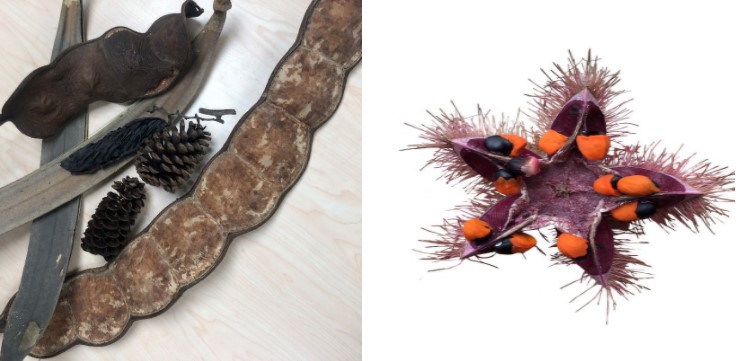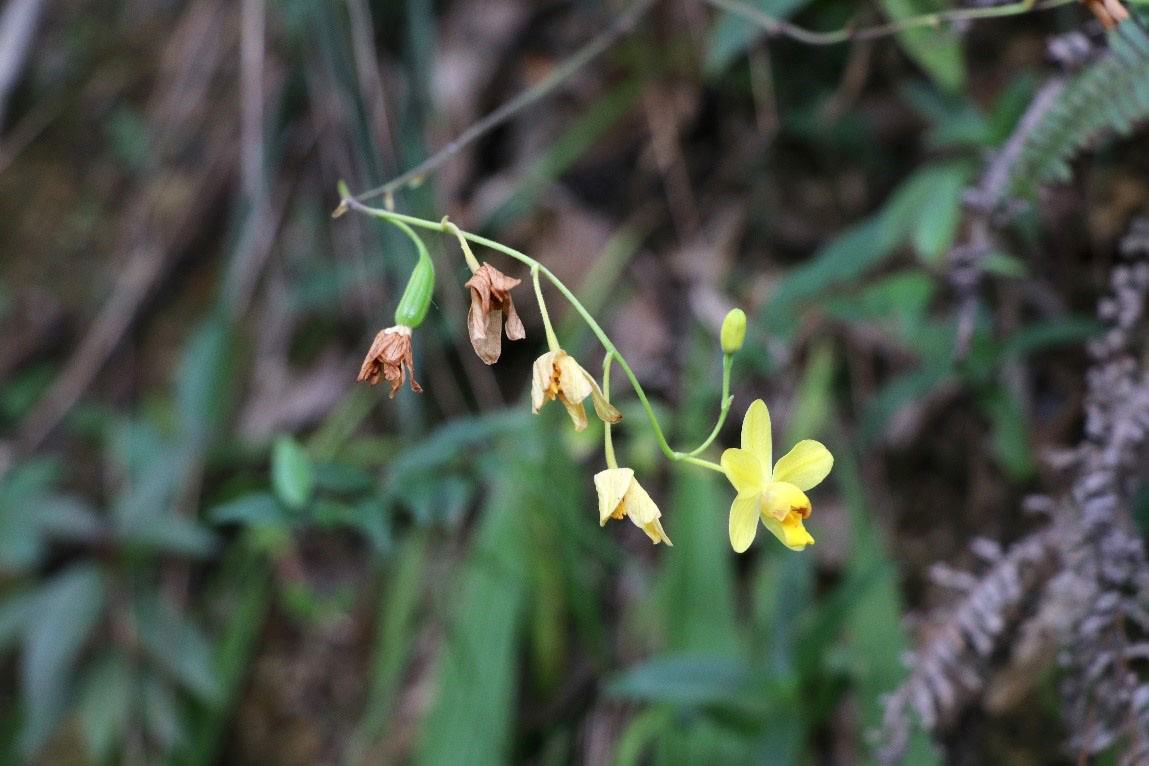Collecting Seeds for Rewilding
Seed collection kickstarts the cycle of ecological restoration. Seeds collected from the wild are brought back to KFBG for germination and propagation in our laboratories and nurseries, and the resulting seedlings are eventually planted back out into the wild.

Things to consider when collecting seeds
With license attained from the Agriculture, Fisheries and Conservation Department of Hong Kong, we are given permission to collect seeds of particular species. We prefer collecting seeds from healthy mother plants. However, our conservation work focuses on preserving species that are very rare and therefore low in number in the wild, we may not have the luxury of choice. Nevertheless, there will typically be a few things to consider in deciding when and how to collect. The optimum time for seed collection will, in most cases, be as soon as the seed is mature because undeveloped seeds may not contain a fully-formed embryo capable of germination on the one hand and, once released from a ripe fruit, seeds are rapidly dispersed and often consumed by herbivores on the other. We generally find that mature seeds collected from the ground are riddled with fly larvae, borers and other insects. As far as possible, we therefore try to pluck fruit that is still attached to the plant.

Genetic diversity is another important consideration. Collecting seeds from a single mother tree will yield full or half siblings and the resulting cohort of seedlings will therefore encompass relatively low diversity. This could lead to negative downstream impacts such as inbreeding. To alleviate this risk, our field teams will always try to obtain seeds from multiple individuals of the same species occurring at different sites. That said, we follow a rule of thumb never to collect more than 10% of the total available seed crop. Taking more than this could reduce the mother plant’s fecundity and affect other living creatures that are dependent on it as a food source. To gain first-hand experience of these issues, I joined KFBG’s orchid specialists on a seed collecting trip…
Let the fun begin!

The aim for this field trip was to collect orchid seeds for germination in our micropropagation laboratory. The target species were Susanna's Pecteilis (Pecteilis susannae), Densely Flowered Geodorum (Geodorum densiflorum), Spidery Cryptostylis (Cryptostylis arachnites), Hairy Spathoglottis (Spathoglottis pubescens) and the Giant Ladder Orchid (Robiquetia succisa). Since these species are each known from several localities, the seed collected today will represent only a portion of the total diversity our botanists aim to bring into cultivation. Moreover, because orchid seeds are minute and dispersed by the wind, it will be necessary to collect intact seed pods that have not yet opened and with all the seeds therefore still contained inside. Judging the best time to collect, so that the seeds are as close to maturity as possible, is something of an art that can only be done with years of field experience. With that in mind, our experienced and knowledgeable orchid specialists set out into Hong Kong’s countryside one hot late summer’s day in search of seed pods!

Our first stop is in Sai Kung. A short walk from the car park, our orchid specialists lead the way to one of the known locations for Pecteilis susannae. Edging along a catchwater, there is not much wildlife to be seen, apart from an occasional dragonfly skimming the surface of the water. I had imagined an off-trail adventure with periods on all fours, but that is clearly not the case this time. Instead, we amble along a paved path through grassland.
After about 15 minutes, I hear one of our orchid specialists shout ‘found it!’ Having walked straight past it without noticing, I turn back and slowly see the target plant come in sight. The fruiting orchid is about one metre tall with a slender leafy stem. Had it not been pointed out to me, I doubt I would ever have spotted it. In part I am surprised that they managed to find the plant so quickly, but I also feel relieved as the heat at this exposed location is searing. One capsule is carefully removed and placed in a paper bag.

Moving on
I am told by my colleagues that the next site that we are visiting today will be a lot more challenging and at much higher elevation. Bearing in mind that the schedule is tight, we make a bee line back to the car and head off to our next destination.

Pulling up beside a big wooden sign saying ‘Welcome to Ma On Shan Country Park’, we grab our bags from the boot and make our way up a long, winding staircase. Eventually a viewing platform comes into sight. For a few sumptuous moments, I catch my breath and take in the glorious view of Hong Kong. After another 30 minutes’ climb, we arrive at the site of our target species, Cryptostylis arachnites. Sadly, however, there is no sign of the plants, let alone their fruit. Perhaps they were not successfully pollinated this year and so have gone dormant that much earlier, or maybe the plants just did not have enough nutrients to bring their capsules to full maturity. For this species, we will have to visit another population on a later date or hope for better luck next year.
The adventure continues
Next we head to Kowloon Peak to look for fruiting Geodorum densiflorum. Scanning the undergrowth from the moving car, our orchid specialists are vigilant. As the car comes to a slow stop, one jumps out with excitement. I believe he must have spotted our target species.


Success! It is a nice, healthy individual bearing a clutch of plump fruit capsules. After checking the fruits, our specialists select the most promising one. Retrieving a toolbox from his bag, a pair of scissors is taken out and the fruit is carefully cut from the plant. With this success under our belt, there is time for one more location.

Venturing across the harbour onto Hong Kong Island, I’m told that Mount Violet is a dream location for botanists. Slowly we walk along the trail until one of our botanists spots what we are looking for. Eagerly leaping into the catchwater, he leans forward and gives one of the few remaining flowers a sniff to see what it could be that attracts the pollinator in the first place. Lower down the stem is a developing capsule, so the faint perfume has clearly done its job in enlisting an insect visitor.

Another success! It has been a great day out for all of us.

